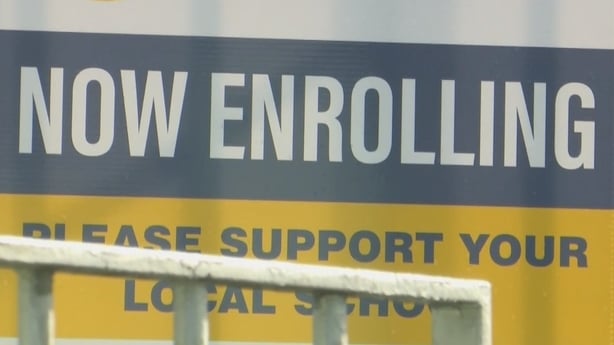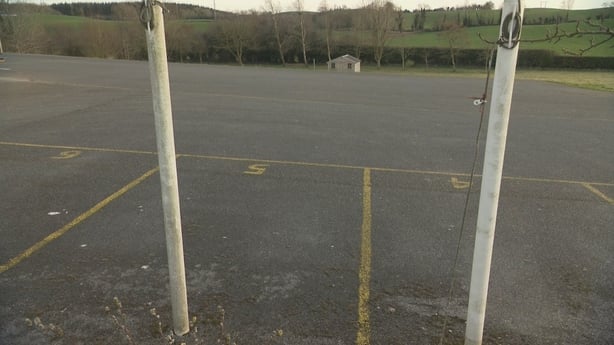Five mainland primary schools have more staff than they have pupils.
Department of Education returns show four schools with just two pupils enrolled, while one had just one pupil when the national annual count was made last year.
The five tiny schools all have staffing of more than two, this includes teachers, special needs assistants and school secretaries.
They are all Catholic schools and all are less than 8km from another mixed Catholic primary school.
They are all in receipt of capitation funding and teaching, and other resources vastly disproportionate to their enrolment numbers.
Their staffing levels stand out at a time when almost one in 10 primary school children are being educated in classes of 30 or more.
Even though these five schools have just a tiny number of pupils, they receive the same core funding that a school with 60 pupils gets.
This is because primary schools with fewer than 60 students are paid both capitation and ancillary grants on the basis of having 60 students.
Capitation funding is intended to contribute towards running costs such as heating, lighting, cleaning and insurance, while the ancillary grant goes towards caretaking and secretarial services.

Staffing at these tiny schools, as well as other very small schools, are also significantly out of kilter with that of others.
A Co Kerry primary school, which last September recorded just one pupil enrolled, has a staffing allocation of two teachers and one SNA.
The other four mainland primary schools with just two pupils enrolled all appear to employ at least two full time staff, including teachers, SNAs and school secretaries.
Schools make annual returns to the Department of Education based on enrolment on 30 September.
Scoil Mhuire gan Smál in the village of Lixnaw, Co Kerry, had just one pupil enrolled when the annual census of schools was carried out on 30 September.
It is just 600m away from another similar primary school.
Staffing is generally allocated based on the returns of the previous year and last year this school recorded an enrolment of 27 pupils.
This is why the school has an allocation this year of two mainstream class teachers.
Records show the school has also been granted one SNA this year. The Department of Education has confirmed that it also operates as a base school for an additional special education teacher.
We need your consent to load this rte-player contentWe use rte-player to manage extra content that can set cookies on your device and collect data about your activity. Please review their details and accept them to load the content.Manage Preferences
A second school in Co Kerry, Flemby National School, also had just two pupils enrolled when returns were made to the department last September.
The school has two mainstream class teachers, one of whom is its principal and records show it has also been allocated one resource teacher.
The Department of Education has said this last teacher is shared with other schools in the local area.
Flemby National School is just off the main Tralee-Cork road, 9km from Tralee town and just under 4km from another similar Catholic primary school.
The patron of both schools, the Diocese of Kerry, has acknowledged that enrolment figures for both schools "have fallen in recent years".

In relation to Flemby National School, it said: "Local stakeholders will be consulted regarding the future of the school for the next school year."
Although their future viability is in doubt, both Kerry schools had solar panels funded by the Department of Education installed on their roofs within the past two years.
The cost of solar panels varies but it is estimated at between €7,000 to €12,000 per school.
Three other schools, Stonetown National School in Co Louth, Attymon National School in Co Galway and Ballyfad National School in Co Wexford, all currently have just two pupils enrolled.
Attymon National School has two teachers and a part-time SNA.
The Department of Education paid for solar panels for Attymon National School last year.
Stonetown National School has an allocation of two teachers and one SNA.
Ballyfad National School has one class teacher, a visiting learning support teacher and a full time secretary.
The patron of Stonetown National School, Archbishop Eamon Martin, said last Friday that the school will close permanently at the end of this school year.
Bishop Ger Nash announced the week before that Ballyfad National School will close.
High number of small schools
Compared to other developed countries, Ireland has a large proportion of very small schools. While some of those schools serve isolated communities, such as island communities, most are located close to other similar schools.
The latest enrolment data shows 127 mainstream primary schools with fewer than 20 pupils.
The number of mainstream primary schools with fewer than 50 pupils enrolled is 570. This represents 18.5% of all primary schools, but they cater for just 3% of all pupils.
Most small schools are under Catholic patronage.

The Department of Education defines a "small school" as one with four mainstream teachers or fewer.
The Programme for Government commits to the introduction of a new programme to support and protect 1,300 such schools.
The Department of Education said: "The Government is very aware that small schools are an important part of the life of local communities.
"The current small schools action project has brought small schools together in local clusters, enabling them to collaborate, identify common challenges and trial innovative solutions which can support the sustainability of small schools."
The department added that a decision to close a school is one made in the first instance by the school patron.
It said there were nine primary school closures between 2020 and 2024.
The Catholic Education Partnership, which oversees Catholic schools, declined to comment on the particulars of any individual school, but it said: "The welfare of pupils is of key concern to their parents, the school and the patron and this concern is central to the consultation process with respect to school closure."
It added: "Many of these schools would have had significantly higher enrolments in the recent past.
"All have given valuable service to their communities for many decades.
"The question of resource allocation is one for the Government, but the patrons continue to work closely with the Department for Education and Youth on these issues."
Read more: Who decides when to shut a school with low enrolment?
Value for Money review
A Department of Education Value for Money review of small schools, published in 2015, found no evidence that small schools provide any greater educational benefits for their pupils "which would offset their greater costs".
That review defined small schools as those with fewer than 50 pupils. Back then, it found that there were 600 of them, 81% of which were within 8km of a similar kind of school.
The review recommended the closure or amalgamation of schools in this last category.
The issue of small schools is a politically charged one and the findings of the review were not acted upon.
The National Parents Council expressed concern at the impact on children of attending a tiny school.
"Small schools are an important part of local communities," National Parents Council CEO Áine Lynch said.
"As well as teaching and learning, primary schools also provide for the really valuable development of children's social skills and the formation of friendships and friendship networks that can often last for life.
"Therefore, children need to be in a school where there are other children.
"They have to be able to find other children that they have things in common with."







